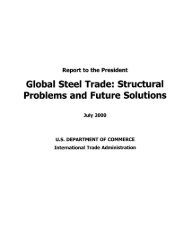Vietnam Environmental Technologies Export Market Plan
Vietnam Environmental Technologies Export Market Plan
Vietnam Environmental Technologies Export Market Plan
You also want an ePaper? Increase the reach of your titles
YUMPU automatically turns print PDFs into web optimized ePapers that Google loves.
into the urban drainage facilities, causing widespread<br />
flooding of both rainwater and wastewater.<br />
Hanoi’s main drainage system is a network of 90<br />
kilometers of inlet sluices. Much of this system servicing<br />
the “old city” was built before 1945 and services an area<br />
of 1,008 hectares.<br />
A system servicing the “new city” covers an area of<br />
about 4,000 hectares for a population of 600,000 people.<br />
The system includes more than 60 kilometers of inlet<br />
sluice and nearly 40 kilometers of open sluice. The inlet<br />
sluices and canals are highly polluted. Some 120,000–<br />
130,000 cubic meters of mud accumulate there each year.<br />
Water-running speed at sluices and canals is very small,<br />
about 0.05–0.10 m/s. The combined-use network is for<br />
rain, domestic, and industrial wastewater.<br />
To date, projects to improve drainage and sewerage<br />
in both the “old” and “new” cities have been financed<br />
by Japanese development aid. From 1994 to 1997, Japan’s<br />
Bank for International Cooperation (JBIC) has provided<br />
loans worth 18.6 billion yen to the Hanoi Drainage and<br />
<strong>Environmental</strong> Improvement Project. The project is<br />
improving flood control and drainage facilities for a 77.5-<br />
square-kilometer area bordered by the Red River and the<br />
To Lich River.<br />
The program has financed dredging and clearing of<br />
sludge in existing sewers and drainage channels. In<br />
addition, the program is constructing flood and control<br />
gates, improving river and drainage channels, and<br />
rehabilitating sewers. A pumping station is being built at<br />
Yen So in the Southeast section of the city to regulate<br />
drainage channels and a reservoir.<br />
The main civil works and procurement of equipment<br />
were selected through international competitive-bidding<br />
methods. Contracts for drainage-channel rehabilitation,<br />
lake dredging, and sewer rehabilitation were awarded<br />
based on local competitive-bidding methods.<br />
5.2—<strong>Market</strong> Opportunities and<br />
Competitive Situation<br />
The greatest opportunities in drainage and sewerage<br />
over the next two years will be in Ho Chi Minh City.<br />
This is largely because of the four major ODA projects<br />
that are underway or in the planning stages. These<br />
projects are tackling a number of environment-related<br />
problems in Ho Chi Minh City, but focus on improving<br />
the city’s drainage and sewerage infrastructure.<br />
HCMC <strong>Environmental</strong> Sanitation Project<br />
The World Bank recently completed a feasibility study<br />
for a $180 million project to improve Ho Chi Minh City’s<br />
sewerage and drainage systems. The project will<br />
rehabilitate the 33-square-kilometer Nhieu Loc–Thi Nghe<br />
catchment basin in the heart of Ho Chi Minh City,<br />
improving sanitary conditions for 1.2 million residents.<br />
According to current plans, the World Bank will finance<br />
$150 million of the project. The Ho Chi Minh City<br />
People’s Committee and the Department of Transport and<br />
Public Works are the local implementing agencies. The<br />
project is scheduled to start in 2000 and be completed<br />
by 2005.<br />
American environmental consulting firm Camp<br />
Dresser McKee (CDM) won a $958,000 contract to<br />
prepare the recently completed feasibility study for the<br />
project. The World Bank is in the final stages of extending<br />
this contract and selecting CDM as project consultant to<br />
prepare the detailed engineering design. Prequalification<br />
for bidding on the project’s first contracts was scheduled<br />
for late 2000.<br />
The project will improve the network of drainage and<br />
sewerage systems that empty into the Nhieu Loc–Thi<br />
Nghe canal, derisively referred to by local residents as<br />
“stink river.” The nine-kilometer canal serves as the main<br />
drain for untreated wastewater from over a million<br />
residents and industries in the city center. The canal also<br />
serves as the main channel for rainwater drainage.<br />
The project will create separate wastewater and rain<br />
water catchment systems leading to the canal. An<br />
interceptor pipeline will be installed two to three meters<br />
under the canal to separate wastewater and rain-water<br />
flows. A wastewater treatment station will eventually be<br />
built where the canal empties into the Saigon River, but<br />
funds are not currently available for its construction. For<br />
now, a pumping station only will be built at the end of<br />
the canal. Much of the project involves basic construction<br />
and piping installation, two areas where domestic<br />
enterprises have experience, equipment, and requisite<br />
skills. Domestic contractors will likely be in a strong<br />
position to win bids. Piping is also likely to be sourced<br />
domestically.<br />
Some areas may provide opportunities for foreign<br />
equipment suppliers and contractors. The interceptor<br />
pipeline will include a series of combined sewer overflow<br />
structures or sluice gates that may be sourced from<br />
overseas. Pumps for the pumping station will also likely<br />
be purchased overseas, as few pumps are produced<br />
locally. Project managers may have to hire a foreign<br />
construction firm with experience in pipe jacking, as this<br />
is the most likely method to be used to install the two- to<br />
three-meter pipe underneath the canal.<br />
24 U.S. Department of Commerce, International Trade Administration
















